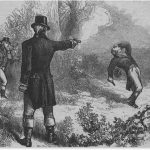Averil Nottage, local historian and former BRA Chair, gives us some interesting and amusing links between Belsize and royalty:
In the Middle Ages monarchs determined who owned land. King Ethelred the Unready granted the manor of Hampstead, including Belsize, to the Abbot of Westminster in 986. Henry VI granted land to the south of Belsize to the newly created Eton College in 1449.
By the 16th century Belsize House was a desirable aristocratic country residence. From 1557 Amigail Waad, an explorer and statesman who became Clerk of the Council to Henry VIII and Edward VI, leased the property. He passed it on to his son William, who became Clerk of the Council to Queen Elizabeth and James I. William died in 1623.
 Belsize House and Park opened as a pleasure garden in 1720. Read’s Journal of 15 July 1721 reported:
Belsize House and Park opened as a pleasure garden in 1720. Read’s Journal of 15 July 1721 reported:
“Last Saturday their Royal Highnesses the Prince and Princess of Wales dined at Belsize-house near Hampstead, attended by several persons of quality, where they were entertained with the diversions of hunting, and such others as the place afforded, with which they seemed well pleased, and at their departure were very liberal to the servants.”
However, the benefits of this royal patronage were short lived as in 1722 Belsize was described as “a scandalous lewd house”, and fashionable visitors soon moved on.
Baron Loughborough bought Shelford House, a substantial property on the northern boundary of the Belsize Estate, shortly before becoming Lord Chancellor in 1783. He was known for his pomposity and siding with whichever party was in power. He held extravagant banquets with guests including the Prince of Wales. By 1801 King George III and the Prime Minister wearied of his “domineering tactics” and dismissed him whilst granting him an earldom. He became Lord Rosslyn and the house was renamed after him. When he died in 1805 the King exclaimed, “He has not left a greater knave behind him in my dominions”.
George IV was determined that his Coronation would eclipse all others. In July 1821 the Morning Chronical promised: “At night, several of the largest rockets will be thrown up from Primrose Hill, by which light balls will be suspended by parachutes in the air, nearly a mile high, where they will continue to burn for many minutes.” Belsize residents were ideally placed to enjoy this spectacle.
A local woman wore a white frock and black sash to mourn the death of William IV in 1837. Sadly, as she walked down England’s Lane, then just a farm track, she fell into the drainage ditch and spoilt her costume.
Queen Victoria and Prince Albert were given a pair of exotic fowl in 1842 and established a large royal fowl-house at Windsor. Poultry keeping soon became very fashionable and poultry shows proliferated. Elizabeth Watts, of Monk Barnes in England’s Lane, was a serious breeder and writer and highly respected in poultry circles. She sold eggs for a guinea (£1.05) a dozen. At the first Windsor show in 1855, Elizabeth won two prizes and Prince Albert was highly commended.
 In the early 1850s Queen Victoria went to see if Rosslyn House would be a suitable summer home for her children. A small girl stopped her carriage at a toll gate in Belsize Lane demanding payment of a penny charge. The Queen was apparently amused and paid the toll, but she didn’t rent Rosslyn House. Soon afterwards it became the home of 70 girls orphaned by the Crimean War. On a sunny day in 1858 Prince Albert led the girls up the hill to a new home in Hampstead.
In the early 1850s Queen Victoria went to see if Rosslyn House would be a suitable summer home for her children. A small girl stopped her carriage at a toll gate in Belsize Lane demanding payment of a penny charge. The Queen was apparently amused and paid the toll, but she didn’t rent Rosslyn House. Soon afterwards it became the home of 70 girls orphaned by the Crimean War. On a sunny day in 1858 Prince Albert led the girls up the hill to a new home in Hampstead.
It was said that T. Gurney Randall, a butcher in England’s Lane, drove his pony and trap to Buckingham Palace to wait upon Her Majesty for orders.
Queen Victoria’s Golden and Diamond Jubilees were celebrated with great patriotic zeal. A beacon was lit by Whitestone Pond on both occasions. In 1897 the Hampstead Vestry, which covered Belsize, organised a three-day Diamond Jubilee fete in Kenwood. In a large marquee, ceremonial speeches were followed by a series of concerts. In another tent there were performing dogs, royal marionettes, ventriloquists, magicians and a knock about cycling act. And outside there was an old English fair, a grand military tattoo and a full programme of sports races. Inmates of the workhouse were given special leave and free tickets to take part in the rejoicing.
The Hampstead and Highgate Express praised the general excellence of the Jubilee decorations on houses and shops, singling out the chaste and artistic decorations and illuminations of the Vestry Hall in Haverstock Hill for special mention. In February 1901 they noted that all classes across Hampstead loyally observed the Queen’s funeral. In the following year a merry peal of bells rang out from St Stephen’s Church to celebrate King Edward VII’s Coronation, but the decorations and illuminations were disappointing because of unsettled weather.

 After a two year pandemic-induced hiatus, Open House is back with a programme of events,An Energy Performance Certificate (EPC) is needed whenever a property is built, sold or rented out. It contains information about a property’s energy use, typical energy costs and recommendations about how to reduce energy use and save money.
After a two year pandemic-induced hiatus, Open House is back with a programme of events,An Energy Performance Certificate (EPC) is needed whenever a property is built, sold or rented out. It contains information about a property’s energy use, typical energy costs and recommendations about how to reduce energy use and save money.  On the main stage – Anthropology
On the main stage – Anthropology Belsize House and Park opened as a pleasure garden in 1720. Read’s Journal of 15 July 1721 reported:
Belsize House and Park opened as a pleasure garden in 1720. Read’s Journal of 15 July 1721 reported: In the early 1850s Queen Victoria went to see if Rosslyn House would be a suitable summer home for her children. A small girl stopped her carriage at a toll gate in Belsize Lane demanding payment of a penny charge. The Queen was apparently amused and paid the toll, but she didn’t rent Rosslyn House. Soon afterwards it became the home of 70 girls orphaned by the Crimean War. On a sunny day in 1858 Prince Albert led the girls up the hill to a new home in Hampstead.
In the early 1850s Queen Victoria went to see if Rosslyn House would be a suitable summer home for her children. A small girl stopped her carriage at a toll gate in Belsize Lane demanding payment of a penny charge. The Queen was apparently amused and paid the toll, but she didn’t rent Rosslyn House. Soon afterwards it became the home of 70 girls orphaned by the Crimean War. On a sunny day in 1858 Prince Albert led the girls up the hill to a new home in Hampstead.  The BelSoc Trustees and Committee were deeply saddened to learn of the sudden death of Neil Harris, our Treasurer. Neil served as the BRA and then BelSoc Treasurer for many years. He oversaw the financial side of our conversion to charitable status and was meticulous in keeping our accounts updated. He hosted BRA and then BelSoc meetings with generosity in his Belsize Lane flat. He was committed to keeping the Committee informed of the work of local charities and in driving forward our charitable donations.
The BelSoc Trustees and Committee were deeply saddened to learn of the sudden death of Neil Harris, our Treasurer. Neil served as the BRA and then BelSoc Treasurer for many years. He oversaw the financial side of our conversion to charitable status and was meticulous in keeping our accounts updated. He hosted BRA and then BelSoc meetings with generosity in his Belsize Lane flat. He was committed to keeping the Committee informed of the work of local charities and in driving forward our charitable donations.
 The injured man, Lieutenant Edmund Bailey, was carried to Mr Adams’ house and laid on a sofa in his parlour. Mr George Rodd, a surgeon from Hampstead, was summoned but unable to save Lieutenant Bailey because of several injuries to his intestines. Before he died the Lieutenant shook hands with Mr O’Callaghan, who had shot him, and said he freely forgave him and that everything had been conducted most honourably. He asked Mr O’Callaghan if he would have forgiven him if he was in his place. Mr Callaghan replied, “Yes my dear fellow, I wish I had been wounded instead of you.”
The injured man, Lieutenant Edmund Bailey, was carried to Mr Adams’ house and laid on a sofa in his parlour. Mr George Rodd, a surgeon from Hampstead, was summoned but unable to save Lieutenant Bailey because of several injuries to his intestines. Before he died the Lieutenant shook hands with Mr O’Callaghan, who had shot him, and said he freely forgave him and that everything had been conducted most honourably. He asked Mr O’Callaghan if he would have forgiven him if he was in his place. Mr Callaghan replied, “Yes my dear fellow, I wish I had been wounded instead of you.” LIFT has a free service that links residents to local businesses in these sectors, offering jobs, training opportunities, start-up/enterprise support, business support, free or subsidised workspaces and funding opportunities.
LIFT has a free service that links residents to local businesses in these sectors, offering jobs, training opportunities, start-up/enterprise support, business support, free or subsidised workspaces and funding opportunities.